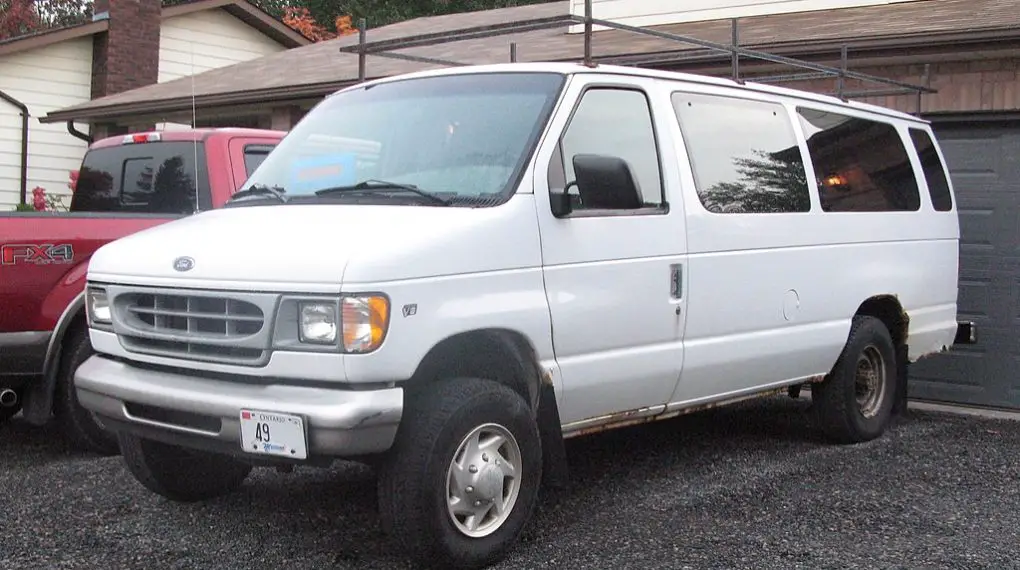This detailed guide will assist you through each phase of the Ford E-350 AC compressor removal, breaking down the process into straightforward steps.

Table of Contents
Preparing for the Ford E-350 AC Compressor Removal
The first step in any repair or removal job is preparation. Make sure your vehicle is parked on a flat surface and the engine is off. Disconnect the negative terminal of the battery to prevent any electrical accidents. Gather the following tools and safety gear:
Wrench set e.g. the HORUSDY 12-Piece Metric Wrench Set listed on Amazon.
Screwdrivers
Safety goggles
Gloves
Locating the AC Compressor
The AC compressor is generally found at the front of the engine compartment and is part of the serpentine belt system. In the Ford E-350, this component is a cylindrical metal unit with a pulley on one end. It will have both electrical and refrigerant line connections.
To identify it easily, look for metal pipes (refrigerant lines) going in and out, as well as an electrical connection. If you are unsure of its location, consult your Ford E-350 owner’s manual where a diagram of the engine components will show you exactly where to find the AC compressor.
Releasing Tension from the Serpentine Belt
The serpentine belt is a long, rubber belt that winds around several pulleys, driving multiple peripheral devices in your engine, including the AC compressor. The tensioner pulley is a critical component here; it maintains the proper tension on the serpentine belt. To remove the AC compressor, you’ll need to move the tensioner pulley to release the belt tension.
Locate the tensioner pulley; it’s typically a small pulley mounted on a metal arm, and it’s spring-loaded to maintain tension. Using a wrench, rotate the tensioner pulley away from the serpentine belt.
This action will relieve the tension, allowing you to easily slide the belt off the AC compressor pulley. Make sure you hold the tensioner securely while doing this, as it is spring-loaded and can snap back.
Check out these other articles…
How Much Pag Oil to Add When Replacing AC Compressor
AC Compressor Oil Change: Your Easy 411 Guide
AC Compressor Oil Capacity: Your Ultimate Guide
Car AC Compressor Oil Capacity: Your Complete 411 Guide
How Does a Refrigeration Compressor Unloader Work? Answered
Disconnecting Electrical Connections and Refrigerant Lines
Safety is crucial in this step. Make sure you are wearing safety goggles to protect your eyes and gloves for your hands. The AC compressor has an electrical connector that provides the electrical power for it to operate.
This connector is generally a simple plug and is secured by a plastic clip. Press the clip and carefully pull the connector apart.
Next, you’ll have to deal with the refrigerant lines. These lines are usually bolted onto the compressor. Using a wrench, carefully unscrew the bolts that hold the refrigerant lines in place.
Once you have removed these, it’s essential to cap the open refrigerant lines immediately to avoid contamination. These lines are often color-coded or marked with ‘H’ (High Pressure) and ‘L’ (Low Pressure), so make sure to note which is which for reassembly.
Removing the Compressor
After all connections have been disconnected, the AC compressor can be removed. It is secured in place by a set of mounting bolts. These are usually located on the sides of the compressor and are accessible using a regular wrench set.
Turn each bolt counterclockwise to loosen and remove them. Store these bolts in a safe place, as you will need them to secure the replacement compressor.
Once the bolts are removed, you can lift the AC compressor out of its bracket. Be cautious during this step; the compressor is relatively heavy. Also, try to keep it level to avoid spilling any internal lubricants.
What To Do After Ford E-350 AC Compressor Removal
With the compressor removed, you have a few options. You can either replace it with a new unit or opt for repairing the existing one. If you choose to replace it, ensure you also examine and possibly replace the O-rings and seals to prevent any future leaks. When installing a new or repaired compressor, simply follow the removal steps in reverse, making sure to tighten all bolts and connections securely.